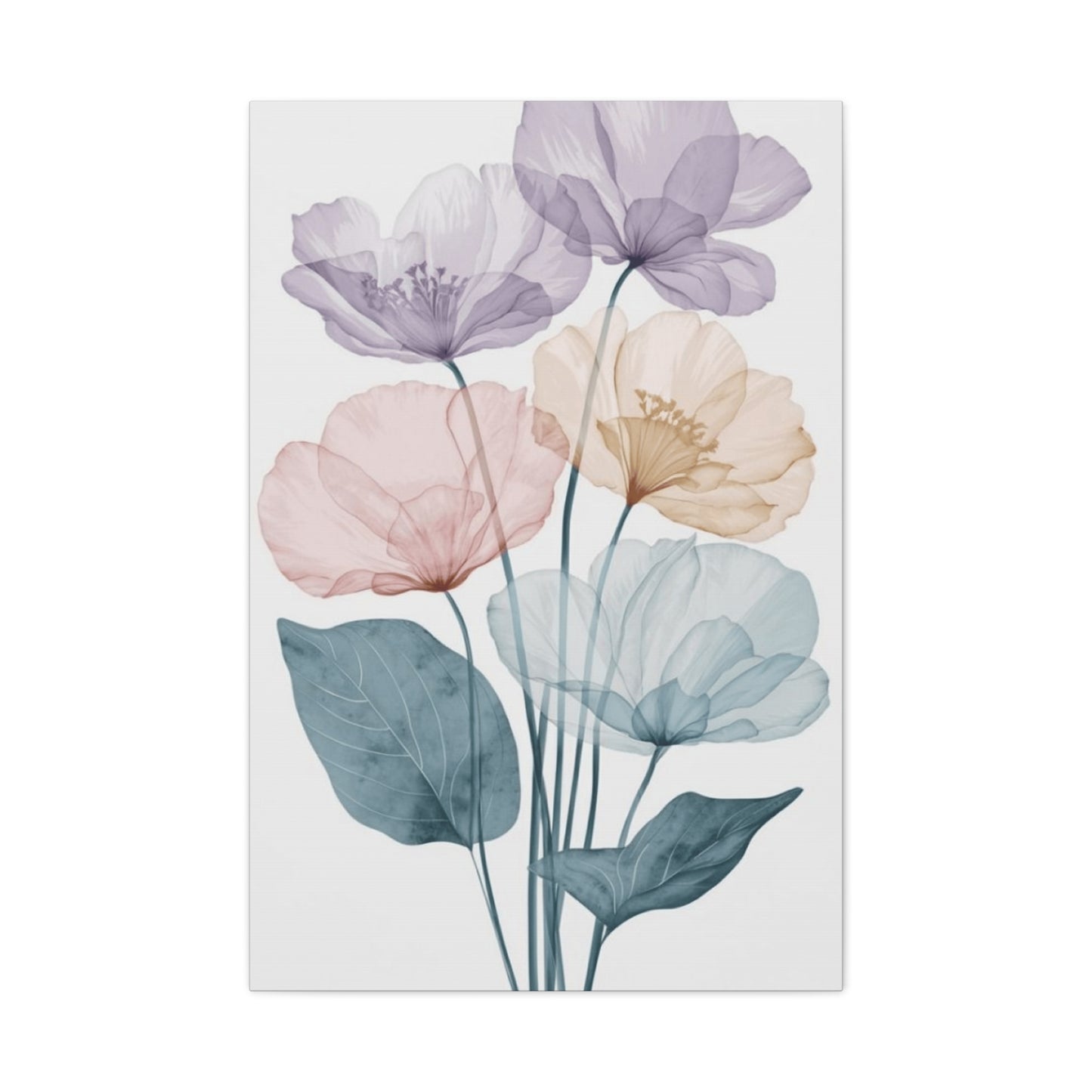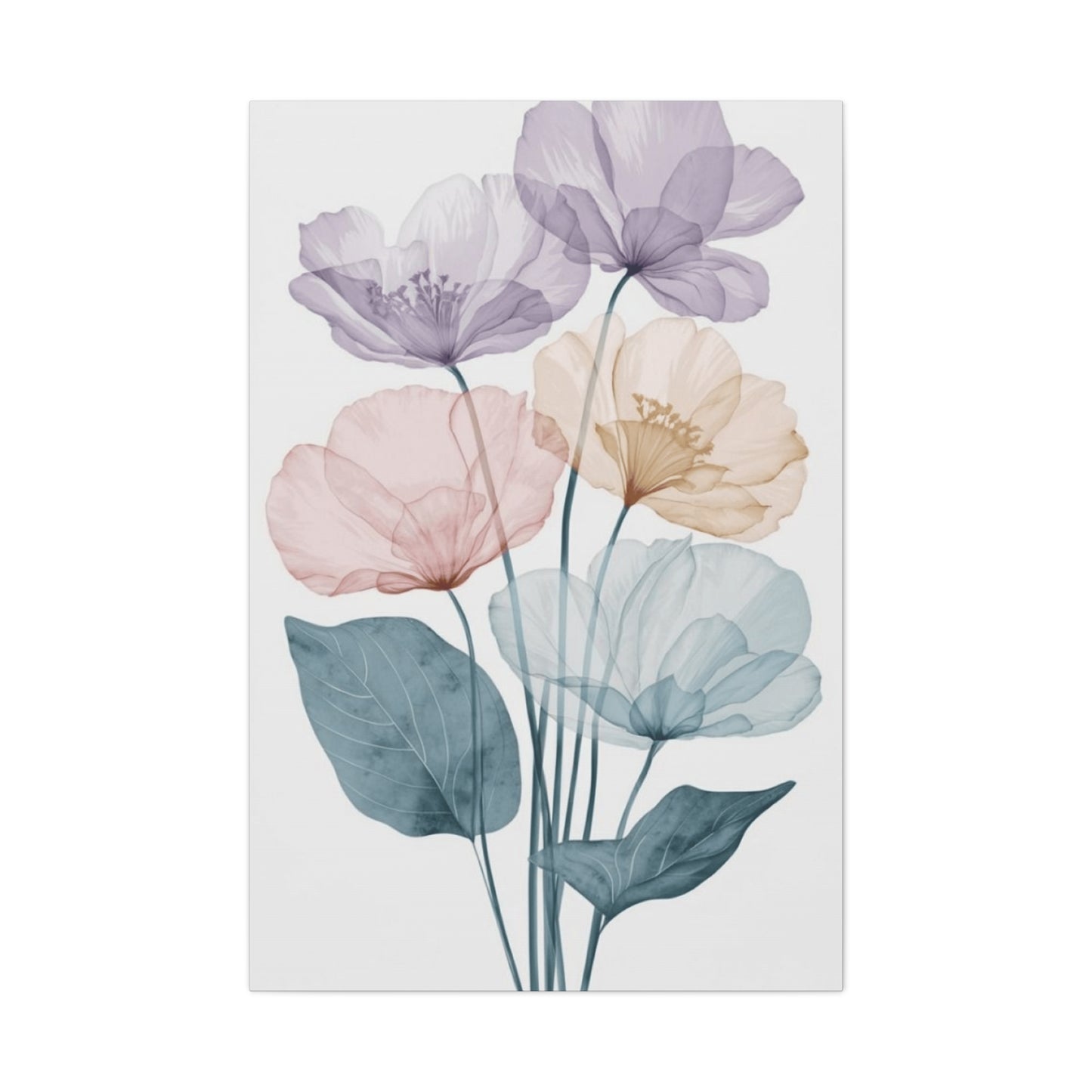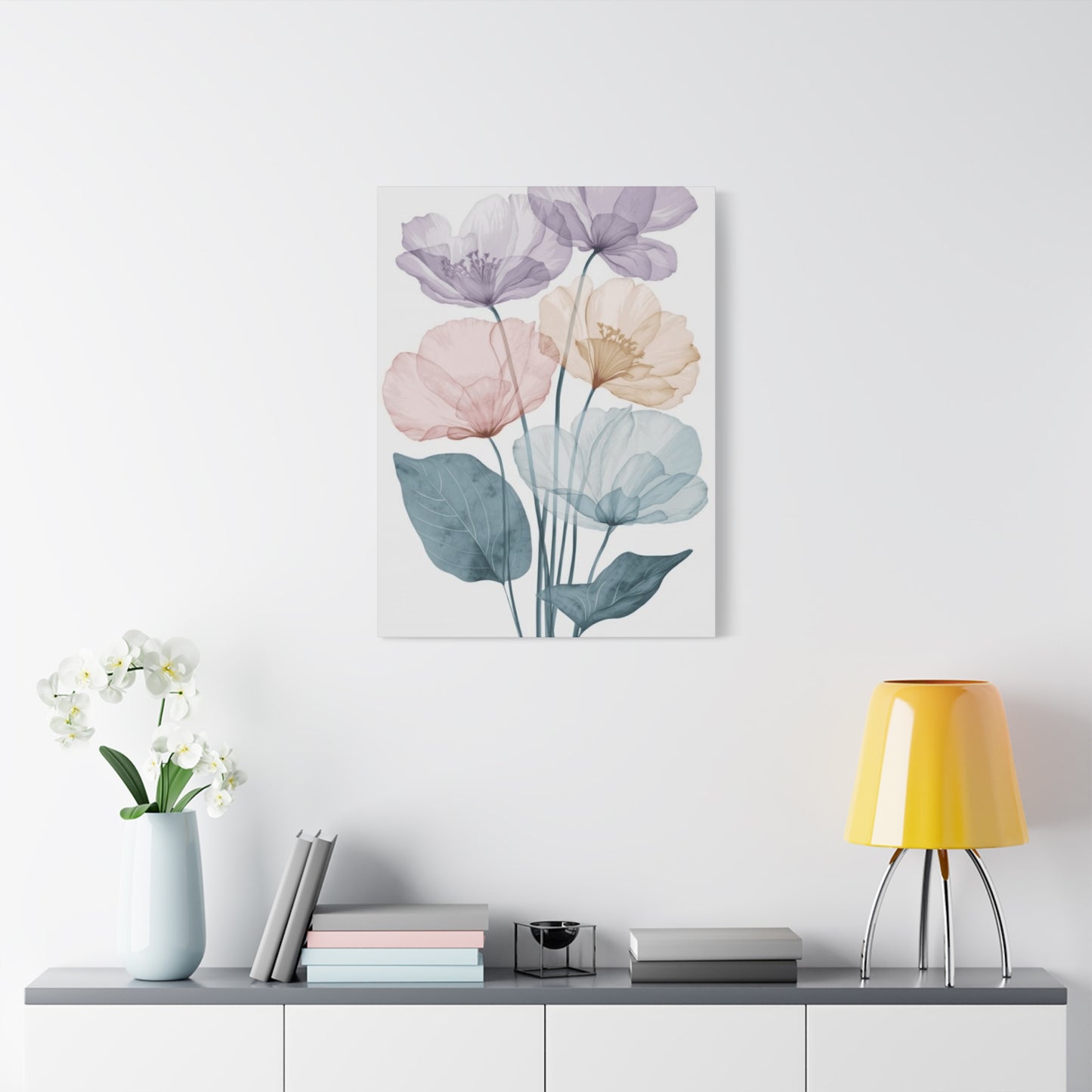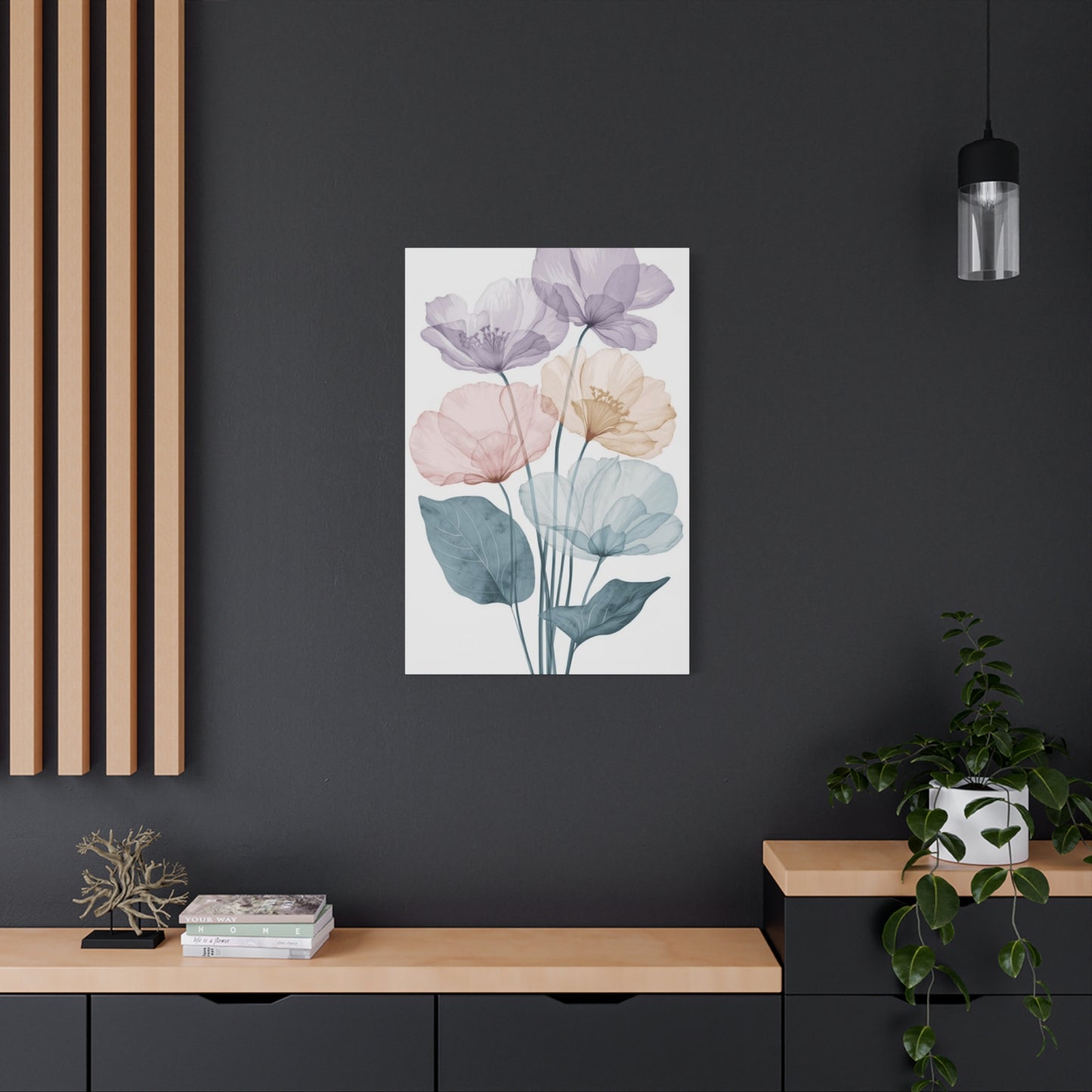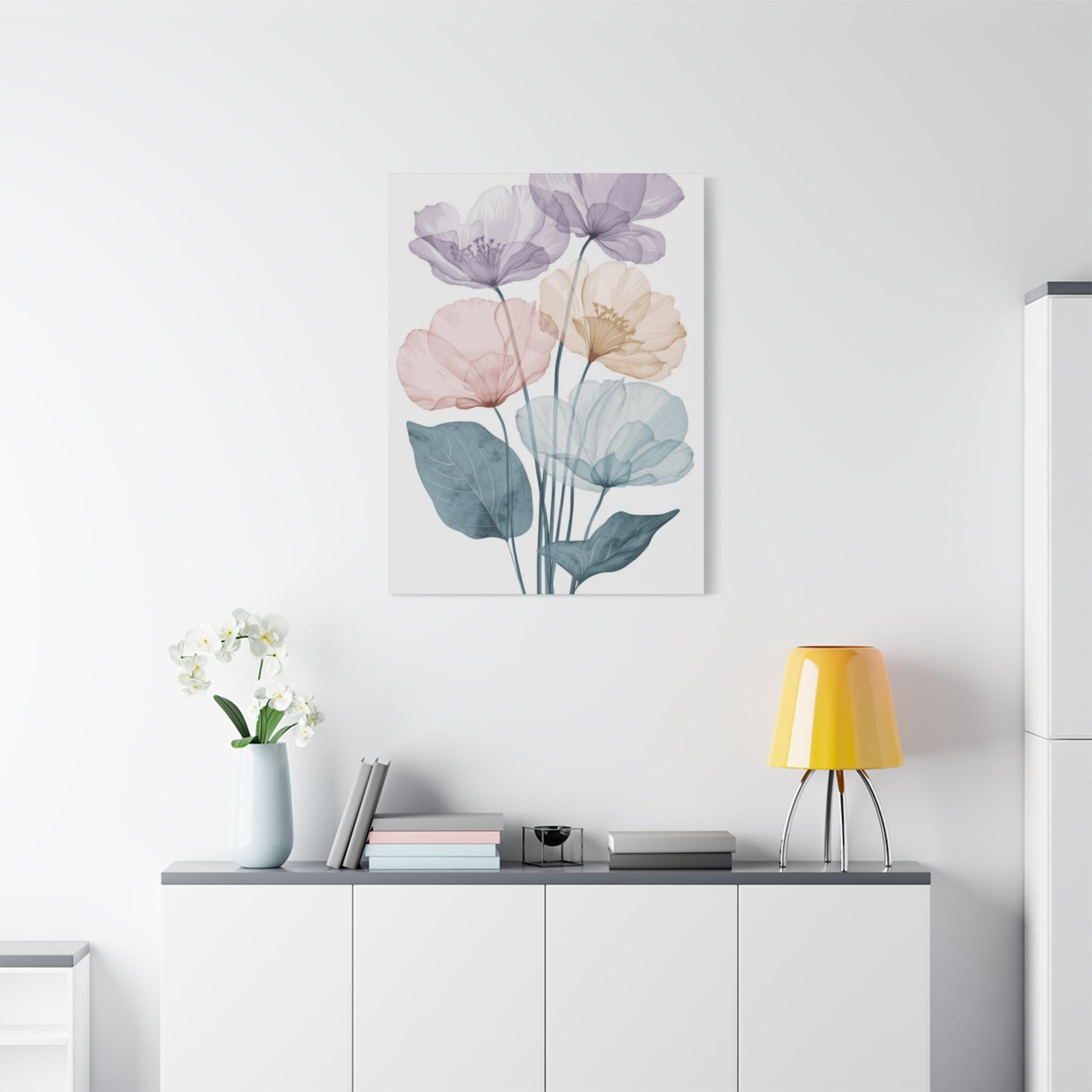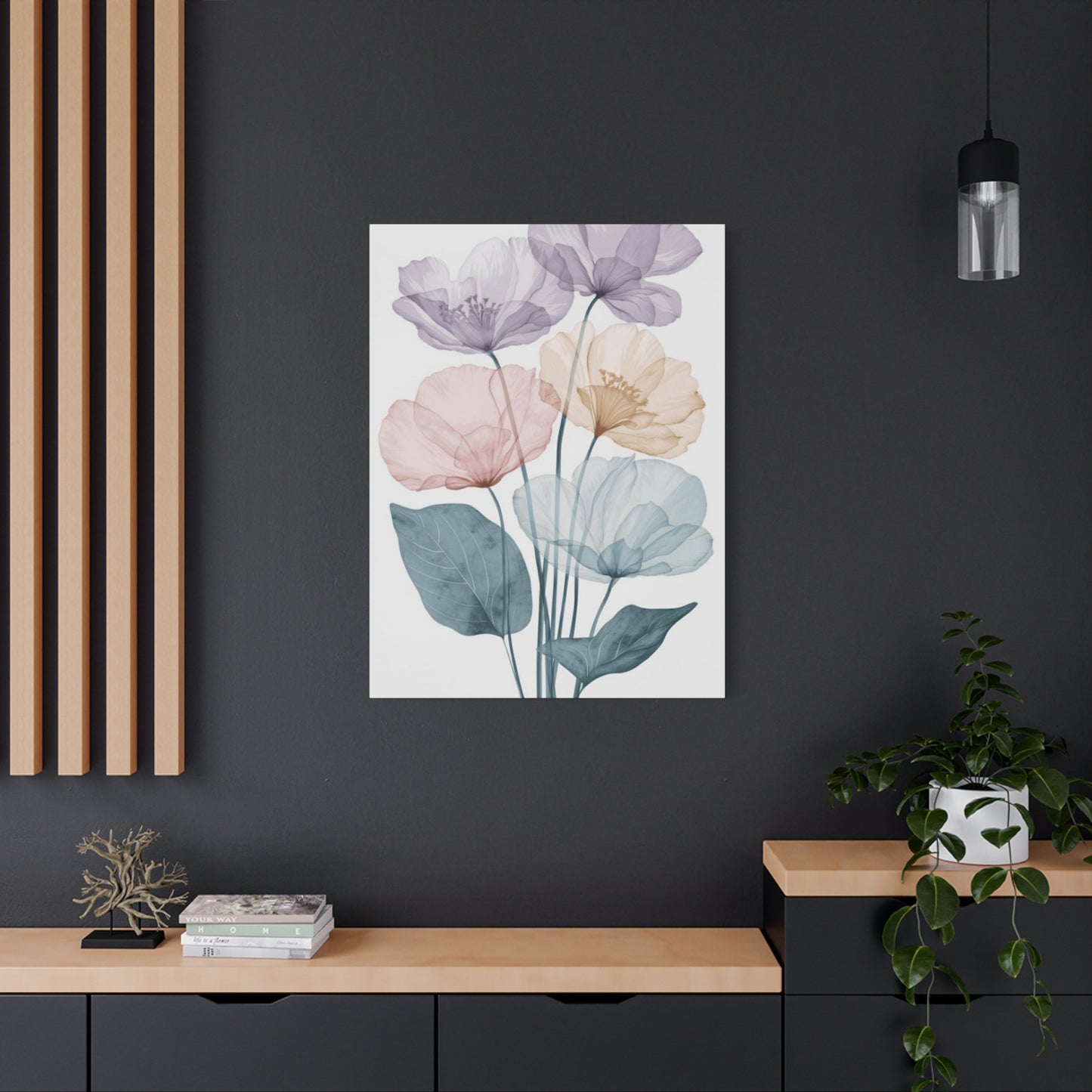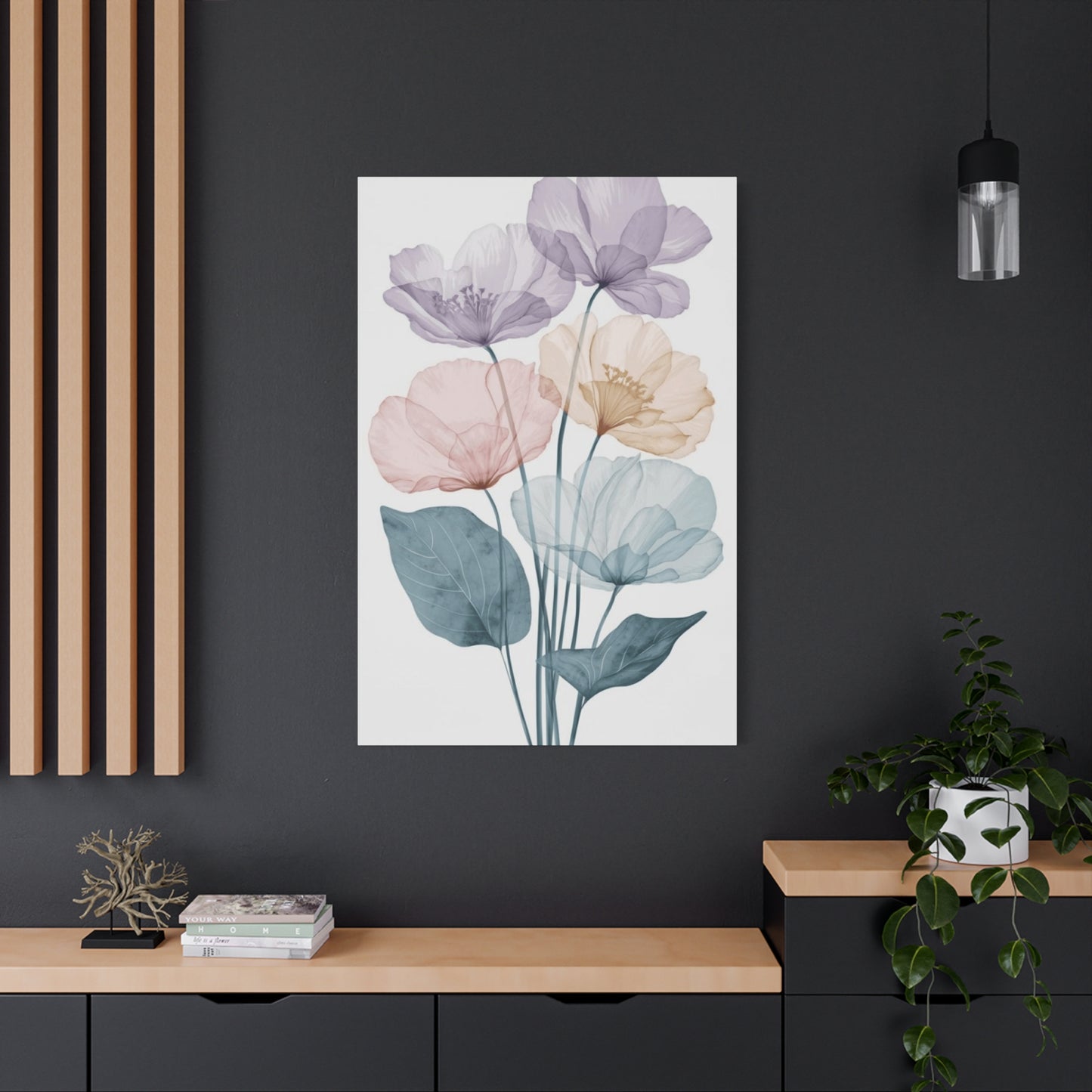Mixing Contemporary Style with Nature: Vibrant Blooms Colorful Flower Petal Wall Art
Decorating your living space with artistic representations of nature has become an essential aspect of modern interior design. Among the countless options available, floral artwork stands out as a timeless choice that brings life, energy, and sophistication to any room. The use of petal imagery on canvas creates an atmosphere that is both welcoming and visually stimulating. These decorative pieces serve multiple purposes, from acting as focal points in minimalist settings to complementing existing color schemes in more traditional environments. The versatility of botanical artwork allows homeowners and designers to experiment with various styles, from hyperrealistic renderings to abstract interpretations that push the boundaries of conventional floral representation. The emotional impact of these pieces cannot be overstated, as they have the power to transform sterile spaces into warm, inviting environments that reflect the personality and taste of those who inhabit them.
The popularity of botanical wall decorations has experienced a significant resurgence in recent years, driven by a collective desire to reconnect with the natural world despite increasingly urbanized lifestyles. This trend reflects a deeper psychological need for biophilic design elements that remind us of our connection to the earth and its endless cycle of growth and renewal. When you incorporate these natural elements into your home through artistic representations, you create an environment that promotes relaxation, creativity, and overall wellbeing. The careful selection of botanical artwork can dramatically influence the mood and energy of a space, making it an important consideration for anyone seeking to create a harmonious living environment. Whether displayed in bedrooms, living areas, offices, or dining spaces, these decorative elements bring a sense of freshness and vitality that artificial decorations simply cannot replicate.
Understanding the various approaches to floral artwork helps in making informed decisions when selecting pieces for your home. From traditional oil paintings that capture every delicate detail of petals and stamens to contemporary abstract interpretations that emphasize color and form over realistic representation, the options are virtually limitless. Each style offers unique advantages and appeals to different aesthetic sensibilities. Traditional approaches tend to create a sense of elegance and timelessness, while modern interpretations often inject energy and boldness into a space. The choice between these styles depends on factors such as existing decor, personal preferences, and the desired emotional impact of the artwork. By exploring the full spectrum of available options, you can discover pieces that not only enhance your space visually but also resonate with you on a personal level, creating a living environment that truly feels like home.
Vibrant Blooms: Colorful Flower Petal Wall Art
The concept of displaying botanical artwork in residential and commercial spaces has evolved significantly over the centuries. What once served primarily as documentation of plant species for scientific purposes has transformed into a celebrated art form that combines aesthetic beauty with emotional expression. Contemporary artists approach floral subjects with renewed creativity, using bold color palettes, unconventional compositions, and innovative techniques to breathe fresh life into this traditional genre. The modern interpretation of botanical imagery reflects current design trends while maintaining a connection to the natural world that has captivated artists and viewers for generations.
When selecting pieces for your space, consider how the colors and composition will interact with your existing decor. A well-chosen piece can serve as the foundation for an entire room's color scheme, inspiring choices for textiles, accessories, and other decorative elements. The scale of the artwork also plays a crucial role in its impact. Larger pieces make bold statements and work well as focal points, while smaller works can be grouped together to create gallery walls that tell a cohesive visual story. The framing and presentation of the artwork should complement both the piece itself and the surrounding environment, ensuring a seamless integration into your overall design scheme.
The psychological benefits of incorporating natural imagery into living spaces have been well documented by researchers studying environmental psychology and interior design. Studies consistently show that exposure to representations of nature, even in artistic form, can reduce stress levels, improve concentration, and enhance overall mood. These effects are particularly pronounced with floral imagery, which carries associations with growth, renewal, and beauty. By thoughtfully incorporating botanical artwork into your environment, you create spaces that not only look beautiful but actively contribute to your mental and emotional wellbeing.
The technical aspects of creating floral artwork require considerable skill and artistic vision. Artists must master the representation of delicate forms, subtle color gradations, and the play of light on various surfaces. Whether working in realistic or abstract styles, successful botanical artists demonstrate a deep understanding of their subject matter combined with technical proficiency in their chosen medium. This expertise is evident in every brushstroke, color choice, and compositional decision, resulting in works that capture the essence of their floral subjects while offering something unique and personally expressive.
The Joy of Color in Floral Paintings
Color serves as one of the most powerful tools available to artists working with botanical subjects. The natural world provides an infinite palette of hues, from the softest pastels to the most vibrant jewel tones, all of which can be captured and interpreted through painting. The way an artist chooses to represent these colors significantly impacts the emotional resonance and visual impact of the finished work. Some artists remain faithful to the actual colors found in nature, creating pieces that feel authentic and grounded in reality. Others take creative liberties, enhancing, exaggerating, or completely reimagining natural color schemes to create works that are more expressive and emotionally charged.
The psychology of color plays a crucial role in how floral artwork affects viewers and spaces. Warm colors such as reds, oranges, and yellows tend to energize and stimulate, making them excellent choices for social spaces like living rooms and dining areas. These hues create feelings of warmth, excitement, and vitality, encouraging interaction and conversation. Cool colors like blues, purples, and greens have a calming effect, making them ideal for bedrooms, offices, and other spaces designed for relaxation and concentration. Understanding these basic color relationships helps in selecting artwork that will support the intended function and mood of each room in your home.
Beyond basic color temperature, the saturation and intensity of colors in floral paintings significantly influence their visual impact. Highly saturated, intense colors create drama and demand attention, making them suitable for spaces that can handle bold statements. Muted, desaturated colors offer subtlety and sophistication, working well in more refined, understated environments. The interplay between different color intensities within a single piece can create visual interest and depth, guiding the viewer's eye through the composition and creating a sense of movement and energy.
Color harmony represents another essential consideration when evaluating floral artwork. Artists may employ various color schemes, including complementary colors that create vibrant contrasts, analogous colors that offer smooth transitions and unity, or triadic color schemes that provide balance and visual interest. Understanding these relationships helps viewers appreciate the deliberate choices artists make when creating their works and assists in selecting pieces that will harmonize with existing color schemes in the home. A well-chosen piece can either complement existing colors or provide a striking contrast that reinvigorates a space.
The emotional associations people have with specific colors also influence how floral artwork is perceived and experienced. Red often symbolizes passion, love, and energy, making red floral pieces popular for romantic spaces or areas where lively energy is desired. Yellow conveys happiness, optimism, and warmth, bringing a sunny disposition to any room. Purple suggests luxury, creativity, and spirituality, while pink evokes gentleness, sweetness, and romance. By selecting artwork that features colors aligned with the desired emotional atmosphere of a space, you can create environments that support specific activities and moods.
The technical execution of color in floral paintings requires considerable skill and knowledge. Artists must understand how pigments interact when mixed, how colors appear under different lighting conditions, and how to create the illusion of depth and dimension through color relationships. The layering of transparent and opaque colors, the use of glazes to modify underlying colors, and the strategic placement of highlights and shadows all contribute to the final visual effect. Appreciating these technical aspects enhances our understanding of the artistry involved in creating compelling floral works.
Expressive Petals: Nature's Palette on Canvas
The individual petal serves as a fundamental building block in botanical artwork, offering artists endless opportunities for creative expression. Each petal possesses unique characteristics including shape, texture, color, and the way it catches and reflects light. Skilled artists capture these qualities while also imbuing their work with personal interpretation and emotional content. The challenge lies in balancing accurate representation with artistic expression, creating works that honor their natural subjects while offering something distinctly personal and unique.
Petals demonstrate remarkable diversity across different flower species, presenting artists with a vast array of forms to explore. Some petals are smooth and uniform, while others feature intricate textures, patterns, or ruffled edges. The way petals overlap, curl, and interact with one another creates complex compositional opportunities. Artists who take time to study these natural forms and understand their underlying structures create more convincing and visually compelling works, even when working in abstract or stylized modes.
The translucency of many flower petals presents particular challenges and opportunities for artists. Light passing through thin petals creates luminous effects that are difficult to capture but incredibly beautiful when successfully rendered. Artists working in various media have developed techniques to suggest this quality, from careful layering of transparent watercolors to strategic use of glazes in oil painting. These technical approaches allow artists to capture the delicate, ethereal quality that makes floral subjects so captivating.
Color variations within individual petals add another layer of complexity and interest to floral paintings. Many flowers feature petals with subtle gradations from one hue to another, or dramatic contrasts between the base and tips of petals. Veining patterns in different colors create delicate networks that add detail and visual interest. Artists who carefully observe and render these color variations create works with greater depth and realism, even when working in relatively stylized or abstract modes.
The arrangement of petals around a flower's center creates natural patterns that have fascinated artists for centuries. These patterns often follow mathematical principles found throughout nature, including spirals, radial symmetry, and Fibonacci sequences. Artists may choose to emphasize these geometric qualities or break from them for expressive purposes. Understanding the underlying structure of flowers helps artists create more convincing representations and provides a foundation for meaningful artistic departures from strict naturalism.
Beyond individual petals, the way petals interact with their environment offers rich material for artistic exploration. The play of light and shadow across petal surfaces, the way petals cast shadows on one another, and how they respond to air movement all contribute to the dynamic quality of floral subjects. Artists who capture these interactions create works that feel alive and present rather than static and lifeless. This sense of vitality transforms botanical artwork from mere decoration into compelling artistic statements that engage viewers on multiple levels.
Blooming Beauty: Colorful Petal Wall Decor
Transforming interior spaces with thoughtfully selected botanical artwork creates environments that reflect personal style while promoting positive emotional responses. The strategic placement of floral pieces throughout a home or office can significantly influence the overall atmosphere and functionality of each space. Understanding the principles of effective art placement helps maximize the impact of these decorative elements, ensuring they enhance rather than overwhelm the spaces they inhabit.
When selecting botanical artwork for specific rooms, consider both the functional requirements and emotional qualities desired in each space. Bedrooms benefit from calming, soothing pieces that promote relaxation and restful sleep. Softer colors and gentle compositions work well in these private sanctuaries. Living rooms, as social gathering spaces, can accommodate bolder, more energetic pieces that stimulate conversation and create focal points for the room. Dining areas offer opportunities to display artwork that enhances the dining experience, with colors and subjects that complement food presentation and encourage pleasant mealtime interactions.
The size and scale of artwork relative to the wall space and surrounding furniture significantly affects its visual impact. A common mistake involves selecting pieces that are too small for the available wall space, resulting in artwork that appears lost or insignificant. As a general guideline, artwork or arrangements of multiple pieces should occupy roughly two-thirds to three-quarters of the available wall space above furniture. This proportion creates a balanced, intentional look that anchors the furniture and creates visual cohesion. Single large pieces make dramatic statements, while collections of smaller works offer flexibility and allow for personal curation over time.
The height at which artwork is hung dramatically influences how it is experienced and appreciated. The standard recommendation places the center of the artwork at eye level, typically around fifty-seven to sixty inches from the floor. However, this guideline should be adjusted based on the specific situation, including ceiling height, furniture placement, and typical viewing positions. In rooms where people are usually seated, such as dining rooms or living rooms with low furniture, artwork may be hung slightly lower to ensure comfortable viewing from seated positions.
Lighting plays a crucial role in how floral artwork is perceived and appreciated. Natural light brings out the true colors of paintings and creates dynamic viewing experiences as the light changes throughout the day. However, direct sunlight can damage artwork over time, causing colors to fade and materials to deteriorate. Artificial lighting offers more control and consistency but requires careful selection and placement to avoid glare, hot spots, or color distortion. Picture lights, track lighting, or strategically placed lamps can effectively illuminate artwork while adding to the overall ambiance of the room.
Grouping multiple pieces of botanical artwork creates opportunities for storytelling and visual interest that single pieces cannot achieve alone. Gallery walls featuring collections of floral works in various sizes, styles, or frames create dynamic focal points that reflect personal taste and collecting history. When creating these arrangements, consider the relationships between individual pieces in terms of color, style, subject matter, and frame design. Lay out the arrangement on the floor before hanging to experiment with different configurations and ensure a pleasing final result.
The frames and presentation methods chosen for botanical artwork significantly impact how the pieces are perceived and how well they integrate into existing decor. Traditional ornate frames suit classical or traditional interiors, while simple, clean-lined frames work better in contemporary settings. Float mounting, where artwork appears to float within the frame with space visible around the edges, creates a modern, gallery-like presentation. The matting color and width also affect the overall look, with neutral mats generally providing safe, versatile options that work with many decor styles.
Abstract Florals: Energy and Emotion in Art
The abstract interpretation of botanical subjects represents a significant departure from traditional realistic representation, offering artists freedom to explore color, form, and emotional expression without the constraints of faithful reproduction. This approach to floral imagery has gained considerable popularity in contemporary art and interior design, appealing to those who appreciate the energy and immediacy of abstract work while maintaining a connection to recognizable natural forms. Abstract botanical art occupies a unique space between pure abstraction and representational art, offering the best of both worlds.
Artists working in abstract floral styles employ various techniques to distill the essence of their subjects while eliminating unnecessary detail. Some begin with realistic studies and gradually simplify and stylize forms until only the most essential elements remain. Others start with abstract marks and gestures, allowing floral suggestions to emerge organically from the creative process. Both approaches can yield powerful results that capture the spirit and energy of floral subjects without being bound by literal representation.
Color often takes center stage in abstract floral works, freed from the requirement to match natural appearances. Artists may exaggerate natural colors to heightened intensity, combine colors that would never appear together in nature, or create entirely invented color schemes that serve purely expressive purposes. This chromatic freedom allows artists to create works that pack tremendous emotional punch and visual impact, transforming familiar floral subjects into bold statements that command attention and provoke strong responses.
The compositional freedom afforded by abstract approaches enables artists to emphasize movement, energy, and dynamic visual flow in ways that realistic representation cannot easily achieve. Swirling, gestural brushstrokes suggest the vital energy of growing things. Overlapping forms create complex spatial relationships that engage the eye and mind. The interplay of positive and negative space becomes more prominent and intentional, with the empty areas of the canvas playing as important a role as the painted areas. These compositional strategies create visual excitement and encourage extended viewing and contemplation.
Texture assumes particular importance in abstract floral works, with artists often building up paint surfaces to create tactile interest that enhances the visual experience. Thick impasto applications create dimensional surfaces that catch light and cast shadows, adding physical presence to the work. Scraping, scratching, and other mark-making techniques create varied surface qualities that add richness and complexity. Collage elements, mixed media additions, and experimental techniques expand the textural vocabulary available to artists, resulting in works that engage multiple senses and invite close examination.
The emotional directness of abstract floral art represents one of its greatest strengths. By eliminating representational details that can distract or limit interpretation, abstract works speak more directly to viewers' emotions and imaginations. The same abstract floral painting might evoke entirely different responses and associations in different viewers, making these works particularly personal and engaging. This interpretive openness allows abstract botanical art to function effectively in diverse settings and appeal to viewers with varying tastes and backgrounds.
Bringing Spring Indoors with Petal Paintings
The seasonal quality of flowers makes them powerful symbols of renewal, growth, and the cyclical nature of life. Capturing springtime energy through botanical artwork allows us to enjoy these positive associations year-round, regardless of the weather outside our windows. Spring-inspired floral pieces bring freshness and vitality to interior spaces, counteracting the stale, static quality that can develop in climate-controlled environments disconnected from natural seasonal rhythms.
The colors associated with spring blossoms naturally lend themselves to creating uplifting, optimistic atmospheres in homes and workplaces. Soft yellows suggest daffodils and early sunshine, bringing warmth without overwhelming intensity. Delicate pinks evoke cherry blossoms and tulips, creating romantic, gentle environments. Fresh greens remind us of new growth and emerging leaves, promoting feelings of renewal and possibility. Lavender and light purple connect to lilacs and other spring bloomers, adding sophistication and calm to spaces. By selecting artwork featuring these spring-associated colors, you can cultivate the emotional benefits of spring throughout the entire year.
Cherry blossom imagery holds particular appeal for those seeking to capture spring's ephemeral beauty. The brief blooming period of these beloved trees has made them powerful symbols of life's fleeting nature and the importance of appreciating beauty while it lasts. Artists interpreting cherry blossom subjects range from traditional approaches that emphasize delicacy and refinement to bold contemporary treatments that capture the explosive abundance of peak bloom. Regardless of style, cherry blossom artwork brings a sense of occasion and celebration to any space, commemorating nature's most photogenic season.
Tulip representations offer another popular choice for bringing springtime energy indoors. The bold, simple forms of tulips translate well into various artistic styles, from precise botanical illustrations to loose, gestural paintings. The incredible variety of tulip colors, from pristine whites through every imaginable hue to deep, dramatic purples and near-blacks, provides artists with rich material for color exploration. Tulip paintings work particularly well in contemporary and transitional interiors, where their clean lines and vibrant colors complement modern aesthetics while maintaining a connection to traditional botanical art.
Wildflower meadow scenes capture spring's abundant, unstructured beauty in ways that cultivated garden flowers cannot match. These compositions typically feature multiple flower species mixed together in natural-looking arrangements that suggest outdoor settings. The casual, organic quality of wildflower paintings makes them particularly suitable for relaxed, informal spaces like breakfast nooks, sunrooms, or country-style kitchens. The variety of colors and forms within a single wildflower composition creates visual interest and prevents the monotony that can result from more uniform subjects.
Beyond specific flower types, the overall freshness and vitality associated with spring can be captured through artistic choices regarding color intensity, value contrast, and brushwork energy. Bright, clear colors suggest spring sunshine and clean air. Strong value contrasts between light and dark elements create the visual pop associated with flowers emerging against darker foliage or earth. Energetic, spontaneous-looking brushwork suggests the explosive growth and vital force of spring. Artists who successfully capture these qualities create works that feel alive and present, bringing authentic spring energy into interior spaces regardless of the season outside.
Radiant Flower Canvases for Modern Interiors
Contemporary interior design emphasizes clean lines, uncluttered spaces, and carefully curated decorative elements that make strong visual statements without overwhelming the eye. Botanical artwork designed for modern interiors must respect these principles while bringing necessary warmth and organic elements to balance the harder edges and cooler materials often featured in contemporary design. The right floral pieces soften modern spaces without compromising their essential character, creating environments that feel both current and livable.
Large-scale botanical artwork serves modern interiors particularly well, providing the visual impact these spaces demand while maintaining the simplicity and clarity that defines contemporary design. A single oversized canvas featuring bold floral imagery can anchor an entire room, serving as the primary focal point and color inspiration for the space. The scale of these pieces prevents them from being overlooked or lost in spacious modern rooms with high ceilings and minimal furnishings. When selecting large-scale works, look for pieces with strong compositional structure and clear visual organization rather than busy, cluttered designs that can create visual chaos when blown up to significant size.
The color palettes appropriate for modern interiors tend toward either dramatic high contrast or sophisticated tonal variations within a limited range. Black and white botanical photography or paintings offer timeless elegance and work with virtually any color scheme. Monochromatic pieces featuring variations of a single color provide visual interest while maintaining color discipline. Bold pops of single saturated colors against neutral backgrounds create the kind of dramatic impact modern design celebrates. Understanding these color strategies helps in selecting botanical artwork that enhances rather than fights contemporary interiors.
The framing and presentation of botanical artwork for modern spaces requires particular attention to detail and quality. Simple, minimalist frames in materials like black-stained wood, brushed metal, or even frameless edge-to-edge presentations suit contemporary aesthetics. The frames should enhance the artwork without competing for attention or introducing visual complexity that conflicts with modern design principles. Professional-quality mounting, matting when used, and overall craftsmanship become more noticeable in minimalist settings where every element is carefully considered and nothing is extraneous.
Abstract and stylized botanical interpretations often work better in modern interiors than photorealistic renderings. The simplified forms and emphasis on color and composition over detailed representation align with modernist principles of reduction and essential expression. These pieces bring necessary organic elements to modern spaces while maintaining the forward-thinking aesthetic these environments cultivate. The best examples balance recognizability with abstraction, offering enough visual information to identify floral subjects while providing plenty of room for personal interpretation and emotional response.
The positioning of botanical artwork within modern interiors requires careful consideration of sightlines, furniture placement, and overall spatial flow. Modern design emphasizes the relationship between objects and the space around them, making negative space as important as positive elements. Artwork should have adequate breathing room, with nothing cluttering the wall space immediately adjacent to it. The piece should relate to nearby furniture in terms of scale and alignment, creating visual connections that unify the space. In open-plan modern interiors, artwork placement should consider how pieces will be viewed from multiple vantage points and how they contribute to the overall spatial experience.
Artistic Petals: A Celebration of Color and Form
The intersection of color and form represents the fundamental challenge and opportunity in all visual art, but it takes on particular significance in botanical subjects where nature provides both elements in abundance. Artists working with floral themes must constantly negotiate between faithful representation of observed reality and creative manipulation of visual elements to achieve desired aesthetic and emotional effects. The most successful botanical artworks find balance between these competing demands, honoring their subjects while asserting their independence as works of art.
Form in botanical art encompasses not only the shapes of individual petals and flowers but also the overall compositional structure of the work. Artists make countless decisions about what to include and exclude, what to emphasize and subordinate, and how to arrange elements to create compelling visual pathways through the composition. Strong compositional form provides the structural foundation that allows color to function effectively. Without solid underlying structure, even the most beautiful colors can result in confused, unsatisfying works that fail to engage viewers or communicate clearly.
The relationship between organic and geometric forms in floral paintings creates productive tension that skilled artists exploit to create visual interest. Flowers themselves feature geometric patterns and mathematical relationships, from the spiral arrangements of petals to the radial symmetry of blossoms. Artists may choose to emphasize these geometric qualities, creating works that feel organized and structured. Alternatively, they might stress the organic, irregular aspects of plants, celebrating nature's departure from perfect mathematical forms. Both approaches have merit, and many successful works incorporate elements of each, creating dynamic interplay between order and chaos, structure and spontaneity.
Color theory provides artists with systematic frameworks for making color decisions, but successful color use also requires intuition, experience, and personal vision. Understanding complementary colors, analogous harmonies, and other color relationships gives artists tools for creating specific effects, but slavish adherence to color rules can result in predictable, lifeless work. The best botanical artists combine theoretical knowledge with creative risk-taking, sometimes making unconventional color choices that shouldn't work according to theory but succeed brilliantly in practice. This balance between knowledge and intuition separates competent craftsmanship from genuine artistry.
The emotional content communicated through combined color and form represents the ultimate achievement in botanical art. Technical skill in rendering forms and applying color provides the means, but emotional resonance gives artwork its lasting value and ability to move viewers. Artists must infuse their work with genuine feeling, whether that's the joy of spring blooms, the melancholy of fading beauty, the excitement of wild profusion, or the calm of minimalist simplicity. This emotional authenticity cannot be faked or manufactured through technique alone; it must come from the artist's genuine engagement with their subject and creative process.
The evolution of artistic styles and movements continually reshapes how artists approach the relationship between color and form in botanical subjects. Impressionist approaches emphasize the optical effects of light and color over precise form definition. Expressionist techniques distort form in service of emotional intensity. Pop art strategies flatten form and employ arbitrary color choices for ironic or celebratory effect. Contemporary artists draw on all these traditions and more, creating eclectic personal styles that reflect current cultural moments while building on art historical foundations. Understanding this stylistic context enriches our appreciation of individual works and helps us see how botanical art continues to evolve and remain relevant.
Color Burst: Floral Art for Bright Spaces
Spaces filled with natural light demand artwork that can hold its own against bright conditions without fading into irrelevance or suffering damage from light exposure. Botanical works intended for sunny rooms must feature strong color choices, bold compositional decisions, and often larger scale to maintain visual presence under challenging lighting conditions. These pieces become even more dynamic and exciting as natural light changes throughout the day, creating an ever-evolving viewing experience that keeps spaces feeling fresh and alive.
The challenge of light exposure requires careful consideration when selecting botanical artwork for bright spaces. Many traditional painting materials, particularly watercolors and some pigments used in oil and acrylic painting, are prone to fading when exposed to direct sunlight over extended periods. Archival-quality materials, UV-protective glazing, and strategic placement away from the most intense direct sun help preserve artwork. Alternatively, reproductions of original works can be used in the brightest locations, reserving more vulnerable originals for protected positions. Understanding these practical concerns ensures that beautiful artwork maintains its appearance for years to come.
Color saturation becomes particularly important in bright spaces where pale, subtle colors may appear washed out or insignificant. Highly saturated, intense colors maintain their visual punch even under challenging lighting conditions, ensuring artwork remains a focal point rather than fading into the background. Deep, rich hues create satisfying contrast against bright walls and abundant natural light. Jewel-toned botanical pieces bring luxury and drama to sun-filled spaces, while neon-bright contemporary works inject energy and contemporary edge. The boldest color choices that might feel overwhelming in dimmer settings often work perfectly in light-filled rooms.
The changing quality of natural light throughout the day creates opportunities for artwork to reveal different aspects at different times. Morning light might emphasize cooler colors and create soft, diffused effects. Midday sun brings out the full intensity of colors and creates strong contrasts. Afternoon and evening light introduces warmer tones and can transform the entire color balance of a piece. Artists aware of these effects can create works that perform differently under various lighting conditions, providing variety and sustained interest. When selecting artwork for bright spaces, consider viewing it under different lighting conditions if possible to understand its full range of appearances.
Reflective surfaces and glossy finishes can create challenging glare issues in bright spaces but can also be used strategically to add dimensionality and visual interest. Highly textured paintings with dimensional surfaces catch light in varying ways, creating shadows and highlights that change as the light moves. Metallic elements incorporated into some contemporary works reflect and scatter light, adding sparkle and energy. Glass and acrylic materials in frames or as artistic mediums themselves interact with light in beautiful ways. These reflective qualities should be considered when planning artwork placement, ensuring that they enhance rather than detract from the viewing experience.
The relationship between botanical artwork and window treatments in bright spaces requires coordination for optimal results. Sheer curtains or light-filtering shades can soften harsh direct sunlight while maintaining the bright, airy quality of the space. This diffused light often shows artwork to better advantage than harsh direct sun, which can create problematic glare and dark shadows. Adjustable window treatments provide flexibility to modify lighting conditions based on time of day and specific needs, allowing you to optimize both natural light and artwork visibility throughout the day. The colors and patterns of window treatments should complement artwork without competing for attention.
Nature's Spectrum: Multicolor Petal Wall Prints
The full spectrum of colors available in the natural world finds expression in botanical artwork that celebrates diversity and abundance. Multicolor floral pieces that incorporate wide-ranging color palettes create maximum visual impact and offer versatility in working with various interior color schemes. These rainbow-inspired works bring joy and energy to spaces, creating focal points that draw the eye and lift the spirits. The challenge for artists creating multicolor botanical work lies in maintaining color harmony and compositional unity despite the complexity of working with numerous hues.
Rainbow arrangements featuring flowers in every color of the spectrum translate beautifully into artistic interpretation, offering built-in color organization that helps maintain visual clarity despite chromatic complexity. Artists may arrange colors in traditional spectrum order from red through violet, creating satisfying progressions that feel natural and organized. Alternatively, they might scramble the color order for more dynamic, unexpected results that create visual tension and excitement. Both approaches can succeed when executed with skill and clear artistic intention. The key lies in creating enough color repetition and connection to unify the composition while allowing individual colors their moment in the spotlight.
Mixed bouquet compositions featuring flowers of different types and colors present particular challenges in creating unified, coherent images. Too much variety can result in chaotic, confusing works that lack focus and fail to communicate clearly. Successful multicolor bouquet paintings typically employ unifying strategies such as consistent lighting, cohesive background treatment, or repeated design elements that connect disparate parts of the composition. Color dominance, where one or two colors appear more frequently or prominently than others, provides visual anchors that help organize complex color arrangements. These subtle organizing principles work beneath the surface to create satisfying viewing experiences without becoming obvious or heavy-handed.
Gradient and ombre effects, where colors transition smoothly from one to another, offer popular approaches to incorporating multiple colors while maintaining visual flow and harmony. These color progressions can occur within individual petals, across entire flowers, or throughout the overall composition. The smooth transitions create restful, pleasing effects even when moving through radically different hues. Digital techniques and airbrush application make perfect gradients relatively easy to achieve, while traditional painting methods create more organic, hand-crafted transitions that carry their own appeal. Both approaches have their place depending on the overall aesthetic and artistic intent.
The psychology of working with multiple colors simultaneously requires awareness of how different hues interact and influence one another. Colors placed adjacent to each other affect how each is perceived, a phenomenon known as simultaneous contrast. Warm colors advance visually while cool colors recede, affecting the sense of depth and space in the composition. Complementary colors intensify each other when placed side by side, while analogous colors create gentler, more harmonious relationships. Artists who understand these principles can use them to create desired effects, making colors appear brighter, subtler, or more harmonious through strategic placement and combination.
Balancing warm and cool colors within multicolor floral compositions affects the overall temperature and emotional tone of the work. Warm-dominated pieces feel energetic, welcoming, and stimulating, suitable for social spaces and areas where activity is encouraged. Cool-dominated works promote calm, contemplation, and relaxation, working well in private spaces and areas designated for quiet activities. Equal balance between warm and cool creates more neutral emotional effects that allow the subject matter and composition to take center stage. Understanding these effects helps in creating and selecting multicolor botanical art appropriate for specific spaces and purposes.
Romantic Rooms with Vibrant Floral Art
The association between flowers and romance runs deep in human culture, making floral artwork a natural choice for creating intimate, romantic atmospheres in bedrooms and other private spaces. The right botanical pieces transform ordinary rooms into personal sanctuaries that celebrate beauty, intimacy, and emotional connection. Romantic floral art typically emphasizes soft colors, graceful forms, and subjects with strong cultural associations with love and affection, though contemporary approaches may take more unexpected directions while maintaining romantic sensibilities.
Rose imagery dominates romantic floral art for obvious reasons, with these iconic flowers carrying millennia of cultural associations with love, passion, and romance. The visual characteristics of roses themselves, from voluptuous full-blown blooms to elegant buds, from thorned stems to soft petals, provide rich material for artistic interpretation. Color choices in rose artwork significantly affect the romantic message conveyed. Red roses symbolize passionate love and desire. Pink roses suggest gentler romantic feelings and affection. White roses indicate purity and new beginnings. Artists may work with traditional rose symbolism or subvert expectations for more contemporary romantic expressions that challenge conventional notions.
Peony paintings offer another popular choice for romantic settings, with these lush, abundant flowers suggesting prosperity, good fortune, and happy marriage in many cultural traditions. The complex, layered structure of peony blooms creates visual richness that translates beautifully into various artistic media. Their soft, billowing forms and typical colors of pink, white, and crimson naturally lend themselves to romantic interpretation. Peony artwork works particularly well in spaces decorated in traditional or transitional styles, though contemporary treatments can make them suitable for more modern environments as well.
The overall mood and atmosphere created by romantic floral artwork depends as much on artistic treatment as subject matter. Soft, diffused lighting effects create dreamy, ethereal moods perfect for romantic spaces. Vignetting, where edges fade into darkness or light, focuses attention on central elements while creating intimate, close-up feelings. Loose, impressionistic brushwork suggests spontaneity and emotion rather than careful control. Close-up compositions that fill the frame with floral forms create immersive experiences that envelop viewers in beauty. These artistic strategies work together to create pieces that feel emotionally immediate and personally engaging.
Pairing romantic floral artwork with appropriate interior design elements amplifies the desired effect. Soft textiles in complementary colors echo artwork and create cohesive design schemes. Lighting that can be dimmed or adjusted allows control of ambiance and mood. Minimizing clutter and maintaining clean, uncluttered surfaces lets artwork take center stage without competition. Fresh flowers that pick up colors or species from artwork create connections between art and life. Thoughtful coordination between artwork and overall room design creates unified, intentional spaces that feel professionally designed while remaining personally meaningful.
Conclusion:
The vibrant charm of Colorful Flower Fields wall art lies in its remarkable ability to unite the serenity of nature with the sleek aesthetics of modern design. By capturing the lush hues and organic rhythms of expansive flower fields, these artworks bring life, movement, and warmth into interiors while maintaining a contemporary sensibility. The bright, layered colors of tulips, poppies, lavender, or wildflowers evoke emotional responses ranging from joy and energy to calm and reflection. This fusion of natural inspiration and modern composition allows flower field canvases to transcend traditional décor, becoming both statement pieces and harmonious complements to diverse interior styles.
At the heart of flower field art is the balance between organic fluidity and visual structure. The sweeping vistas of blooms create a sense of infinite depth, inviting the eye to wander across the canvas, while the carefully chosen color palettes maintain cohesion and rhythm. Modern interpretations often incorporate abstract touches, geometric framing, or minimalist backgrounds, bridging the gap between natural beauty and contemporary design. This approach enables the artwork to resonate with a wide audience—those who appreciate nature, color, and artistic innovation simultaneously. Each piece becomes more than decoration; it transforms walls into immersive landscapes that inspire and energize.
From an interior design perspective, Colorful Flower Fields canvases offer extraordinary versatility. Large-scale pieces can anchor living rooms, dining areas, or bedroom walls, creating bold focal points that draw attention and define the space. Smaller prints or multi-panel arrangements can enhance galleries, hallways, or transitional spaces, offering layers of color and texture that complement furniture and accent décor. The inherent vibrancy of the flower palette—ranging from warm reds, yellows, and oranges to cool blues, purples, and greens—pairs harmoniously with neutral tones or can contrast beautifully against dark or muted backgrounds. This adaptability ensures that flower field artwork seamlessly complements modern, contemporary, bohemian, minimalist, or eclectic interiors.
Beyond their visual appeal, flower field canvases evoke emotional and symbolic resonance. Flowers have long been associated with growth, vitality, renewal, and joy, while expansive fields convey freedom, openness, and a connection to nature. When integrated into living spaces, these artworks promote a sense of calm, creativity, and positivity. The interplay of color, light, and perspective encourages viewers to pause and reflect, offering an immersive experience that engages both the senses and the mind. Flower field art transforms interiors into environments where nature, art, and modern design coexist in perfect harmony.
The craftsmanship behind Colorful Flower Fields wall art is equally significant. Artists often employ techniques such as layered painting, digital rendering, or mixed-media textures to replicate the depth, luminosity, and vibrancy of natural landscapes. Some works lean toward realism, capturing each petal and stem with meticulous detail, while others embrace impressionistic or abstract approaches, emphasizing movement, light, and color energy. This range of styles ensures that there is a piece for every collector and homeowner—whether one desires a calming, photorealistic vista or a bold, expressive interpretation of a flower field. Every canvas embodies a synthesis of technical skill, aesthetic intuition, and emotional resonance.
Moreover, pairing flower field art with complementary décor enhances its transformative impact. Natural materials such as wood, linen, and stone echo the organic inspiration of the artwork, while metallic accents, soft textiles, and curated lighting can amplify depth and visual interest. These canvases harmonize beautifully with existing furniture, rugs, and accessories, creating spaces that feel vibrant yet grounded. Strategically placed lighting can accentuate textures, highlight colors, and bring out the dynamic energy of the flowers, turning walls into living landscapes that evolve with the natural and artificial light throughout the day.
In conclusion, Colorful Flower Fields wall art exemplifies the seamless blending of nature and modern design. It brings vitality, elegance, and emotional resonance into interiors, offering a visual and experiential bridge between organic inspiration and contemporary aesthetics.
Ultimately, embracing flower field canvases allows homeowners and designers to curate spaces that are vibrant, harmonious, and full of life. By integrating these artworks into interiors, walls become more than decorative surfaces—they transform into immersive environments that celebrate color, nature, and modern artistic expression, enriching everyday experiences with beauty, joy, and timeless appeal.


















